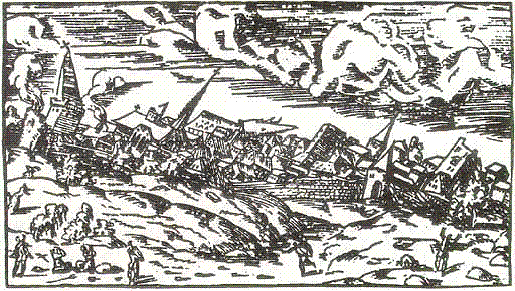We have mentioned more than a few Holy Roman Emperors, but not any Holy Roman Empresses.
Agnes of Poitou was born about 1025, the daughter of William V, Duke of Aquitaine, and Agnes of Burgundy. In November of 1043 she was married to Holy Roman Emperor Henry III (Henry was 26 and had been married before; his first wife, Gunhilda of Denmark, had died). The marriage between Henry and Agnes helped improve relations between the Holy Roman Empire and western Europe. They were crowned Emperor and Empress in 1046 by Pope Clement II.
Henry III died on 5 October 1056, when he was only 38 years old, after naming his son Henry as his heir (all his other children were daughters, except for Conrad who had died a year earlier). Henry IV was barely six years old, and his mother was named his regent, taking on the managing of the affairs of the Empire.
She may have been a good wife and mother, but she was not an admirable administrator. It would have been wise to maintain the kingdom for her son's eventual majority, but she let herself be persuaded to make changes like giving away valuable property—namely, all of Bavaria, Carinthia, and Swabia!
She did not approve of church reform, and got involved with papal politics. She supported Pope Stephen IX, who was forced to live outside Rome, over Pope Benedict X who actually held the papal seat.
In 1062, a group of aristocracy led by Archbishop Anno II of Cologne, decided (for whatever reason; guessing motive is difficult) that Henry needed to be removed from the influence of his mother. They staged what is called the Coup of Kaiserswerth. That's a story for tomorrow.
 |
| Carving of Agnes |
Henry III died on 5 October 1056, when he was only 38 years old, after naming his son Henry as his heir (all his other children were daughters, except for Conrad who had died a year earlier). Henry IV was barely six years old, and his mother was named his regent, taking on the managing of the affairs of the Empire.
She may have been a good wife and mother, but she was not an admirable administrator. It would have been wise to maintain the kingdom for her son's eventual majority, but she let herself be persuaded to make changes like giving away valuable property—namely, all of Bavaria, Carinthia, and Swabia!
She did not approve of church reform, and got involved with papal politics. She supported Pope Stephen IX, who was forced to live outside Rome, over Pope Benedict X who actually held the papal seat.
In 1062, a group of aristocracy led by Archbishop Anno II of Cologne, decided (for whatever reason; guessing motive is difficult) that Henry needed to be removed from the influence of his mother. They staged what is called the Coup of Kaiserswerth. That's a story for tomorrow.














